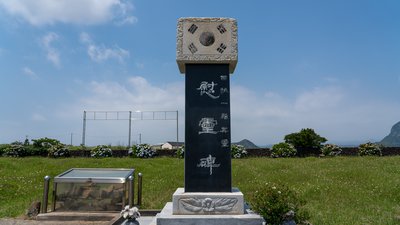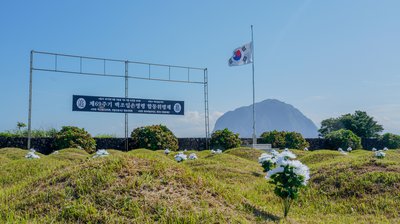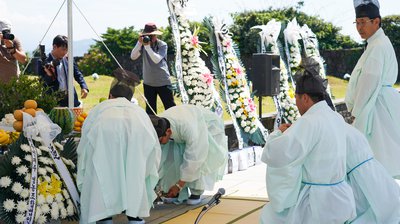Baekjoilsonjiji
Site Overview
When the Korean War broke out on June 25, 1950, the government implemented a measure called “preventive custody” for suspected dissidents and members of the National Guidance Alliance(Kukmin Bodo Yonmaeung). At 5 AM on August 20, 1950, the Moseulpo police station arrested and executed villagers from Daejeong-myeon, Hanrim-myeon, and Ahndeok-myeon at Seodal Oreum due to their suspected political beliefs. The estimated number of victims that day is between 210 and 250 people. Before this mass execution, suspects in preventive custody from Hanrim-myeon were already killed at 2 AM.
After the killings, the military and police prohibited bereaved families from retrieving the bodies. It was not until six years later, in May 1956, that the families were allowed to collect the remains and establish a graveyard. Because the victims lost their lives simultaneously, the families created a communal graveyard. The term "Baekjoilsonjiji" (百祖一孫之地) signifies that 132 ancestors died together, their bones mingling as one, symbolizing that their descendants are one family.
Following the establishment of the Graveyard of 100 Ancestors, the military and police persistently oppressed the bereaved families. They attempted to dismantle the graveyard by both conciliating and threatening the families. Following the 5.16 military coup, the police destroyed the graveyard’s cenotaph on June 16, 1961.
The bereaved families preserved the fragments of the destroyed cenotaph. They decided to display these pieces next to the current cenotaph, accompanied by a signboard explaining why the original cenotaph was demolished by the police.
Site Info
- categoryArea Seogwipo-si, West Side
- gps_fixedLatitude 33.2203611111111
- gps_fixedLongitude 126.285694444444
- pin_dropAddress 586-1, Sangmo-ri, Daejeong-eup, Seogwipo-si, Jeju-do, Korea
Photos



